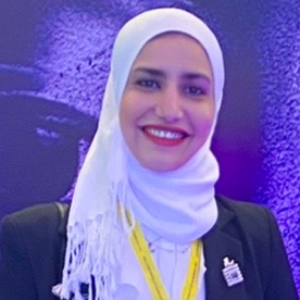Title : Neurocognitive multisensory therapy in stroke patients
Abstract:
Background: The Neurocognitive Rehabilitation theory serves as the basis for Cognitive Multisensory Rehabilitation in stroke patients. The neurocognitive approach to rehabilitation is based on theories of motor control and learning aiming to facilitate Neuroplasticity through the formation of new synaptic connections or the development of projections from neurons on the undamaged side of the brain to denervated areas, These plasticity pathways are considered as a central factor in returning brain functions or ameliorating cognitive impairments following brain injuries.
Objective: To investigate the effect of Neurocognitive multisensory therapy in stroke patients, as Neurocognitive multisensory therapy is focused on integrating body parts and integrating movements in relation to the environment during functional tasks, also depending on the spatial perception and exploration is a multisensory task requiring the integration of signals from visual, auditory, proprioceptive, and vestibular cortices.
Methods: Thirty stroke patients were evaluated pre and post-treatment. The outcome measures included the Fugl Myer Assessment upper extremity (FMA-UE), and the action research arm test (ARAT), Both groups received the conventional physical therapy program, while the study group received a cognitive intervention program called Neurocognitive multisensory therapy, which depended on the innovative approach for retraining motor functions of patients with hemiplegia after a stroke which is considered an appropriate intervention within the cognitive process of motor learning, such as perception, attention, memory, visual sense, and language.
Results: The comparison between both groups after therapy approved that there was a significant improvement which revealed a significant increase in the ARAT, and FMA-UE scores in the study group more than the control group (p < 0.05).
Conclusions: Neurocognitive Rehabilitation is considered a beneficial physical therapy neurorehabilitation for enhancing motor and sensory functions in stroke patients, thereby improving the patients' everyday functional activity as neurocognitive rehabilitation faces the problem of how new learning can occur under pathological conditions.
Keywords: Stroke, Neurocognitive, Cognition, Sensory, Hemiplegia



